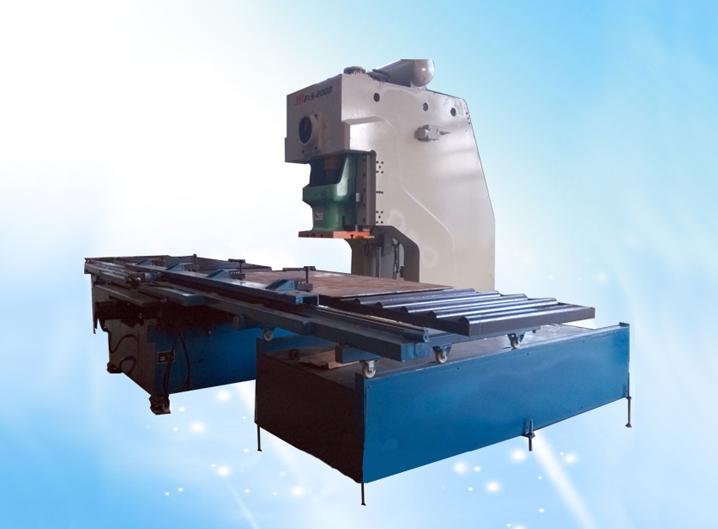How Perforated Sheets Achieve High Precision During Production
Source:www.cn-psp.cnAuthor:河北森驰公司 Last updated:2025-06-10 21:50:29 Browse:
Perforated sheets are widely used in various industries such as architectural decoration, industrial filtration, acoustic control, and automotive manufacturing. Whether the goal is aesthetic design, efficient airflow, precise filtration, or noise reduction, the precision of perforated sheets plays a vital role in ensuring product performance and long-term reliability.
So how is high precision achieved in the production of perforated sheets? Let’s explore the key factors that contribute to precise manufacturing:
1. Mold Design and Fabrication: The Foundation of Accuracy
The mold is the core component that determines the hole pattern consistency and punching accuracy of perforated sheets.
CAD/CAM Technology: Computer-Aided Design (CAD) and Computer-Aided Manufacturing (CAM) systems allow engineers to design hole patterns, spacing, and dimensions with extreme accuracy. These are then transferred to CNC machines for high-precision mold fabrication.
Durable Mold Materials: High-strength alloy steels are often used to ensure mold longevity and precision consistency across multiple production cycles.
2. Laser Cutting Technology: Ideal for Complex and Ultra-Fine Perforations
For applications requiring extremely fine detail, such as acoustic panels or decorative facades, laser cutting is a superior method for achieving tight tolerances:
Non-Contact Process: Laser cutting generates high temperatures to vaporize the material instantly, avoiding mechanical stress and minimizing deformation.
Micron-Level Accuracy: Laser heads are guided by CNC systems, allowing for the creation of uniform holes as small as 0.5 mm, ensuring consistent precision across the sheet.
3. CNC Punching Machines: Ensuring Consistency in Mass Production
When large volumes of perforated sheets are required, CNC punching machines offer a balance of speed, efficiency, and accuracy:
Computer-Controlled Operation: CNC systems precisely guide tool movement and punching force, ensuring every hole is placed exactly according to the programmed design.
Fast Tool Change System: For manufacturers dealing with a variety of hole shapes and layouts (as in construction or filtration industries), quick changeovers improve flexibility and maintain high precision.
4. Material Selection and Heat Treatment: Supporting Dimensional Stability
The quality and treatment of the raw material directly impact the accuracy and consistency of the final product:
Premium Materials: Sheets made from stainless steel, aluminum, or cold-rolled steel with uniform thickness and surface smoothness reduce the risk of warping or distortion during processing.
Thermal Processing: Techniques such as annealing or tempering increase material toughness and stress resistance, which is essential for maintaining shape and dimensional integrity during punching or cutting.
5. Rigorous Quality Inspection: Controlling Every Detail
High-precision perforated sheets require comprehensive quality checks throughout the production process:
Advanced Measuring Systems: Tools like laser scanners, optical profilers, and 3D measurement systems are used to evaluate hole diameter, alignment, and spacing.
Combined Manual and Automated Inspection: Skilled inspectors use precision calipers and microscopes alongside digital systems to double-check that every batch meets strict quality standards.
6. Industry-Specific Demands for High Precision
The need for precision in perforated sheets is not just a technical requirement—it directly influences performance in various applications:
Architectural Design: Exterior facades and ceilings require visually uniform hole patterns; even minor discrepancies can affect the visual outcome.
Industrial Filtration: Exact hole sizing ensures consistent fluid or air flow rates.
Acoustic Panels: Precise perforation patterns are critical to effective sound absorption and acoustic performance.
Automotive Components: Lightweight yet high-strength perforated sheets are used for structural and ventilation purposes, where precision directly impacts safety and aerodynamic behavior.
Conclusion: Precision Is the Result of Integrated Excellence
The production of high-precision perforated sheets is a comprehensive process involving advanced equipment, skilled craftsmanship, and strict quality control. From mold design and laser cutting to material processing and final inspection, every step plays a role in achieving the consistency and performance required by modern industries.
If you're seeking precision-engineered perforated sheets for your architectural, industrial, acoustic, or automotive applications, our team offers tailored solutions that meet the highest production standards.
